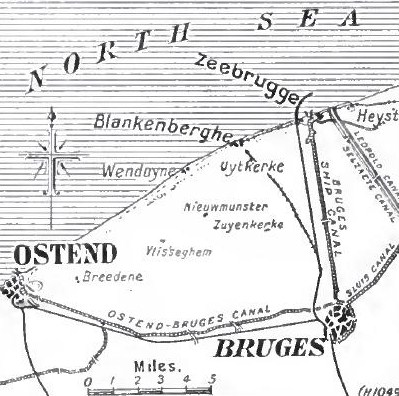Flotsam – September
Wreck of WWI German U-boat discovered off the Belgian Coast
The Governor of the Belgian province of West Flanders, Carl Decaluwé, announced in a press conference on 19 September that a submarine wreck from the First World War off the Belgian coast had been discovered by divers. This fascinating discovery is very well preserved and therefore the mortal remains of the crew are suspected to be still on board. It was not expected to find another, eleventh, one in Belgian waters, where 10 submarine wrecks from the First World War had already been located and identified. Further dives to the wreck will now reveal the U-boat´s number to identify the crew. The German government was informed, but the military attaché of the German embassy in Brussels, Stefan Janke, told that it was not intended to recover the wreckage, but to mark it as a war grave in the maps and to provide it with a diving ban..
The first indications of the U-boat were already visible on a sonar survey by the Belgian government in 2014, but it was assumed that this was a wreck of a landing craft from the Second World War, which was relatively common in this area. The wreck was included as such in the government’s wreck database. Only a renewed analysis of the data of the sonar survey by underwater archaeologists, among them Tomas Termonte, suggested strongly by its shape that this wreck in fact might be a U-boat . In June of this year, Termote undertook the first dives to the wreck, which lies at a depth of 90 feet with a heel of about 45° on a flat keel in the sand. It turned out to be the wreck of a UB II U-boat of the U-Boat Flotilla Flandern. The wreck is now covered with underwater vegetation, but otherwise largely intact. Visible, heavy damages can only be found on the bow. One of the two overlying torpedo tubes has been separated apparently by an explosion. Debris in the vicinity indicates that the U-boat must have sunk immediately after this explosion, most likely by a mine hit. During the century on the bottom of the sea, fishing has also left its marks on the sunken U-boat. Many times, nets got caught in the wreck and tore parts off or got stuck. This was apparently also the case for the conning tower hatch, but since the two other hatches are still locked tightly, it is assumed that the mortal remains of the crew of up to 23 men are still in the wreckage and that it can therefore be regarded as a sailor’s grave.

In order to keep away treasure hunters, the exact position of the wreck is kept secret until it has been placed under the formal protection of Belgian law. Termote intends to make further dives to the wreck before the winter to identify it without a doubt. In this case, he relies particularly on the propellers of the boat, whose markings should permit an unambiguous identification. According to Termote, only three boats from UB II boats are considered to be possible, i. e. UB 27, UB 29 or UB 32.
Tomas Termote (42) is an underwater archaeologist from Ostend. He is a very experienced diver with about 5,000 dives in the North Sea. He is a recognized expert for the Flemish U-Flotilla during the First World War. For his highly recommendable book “War Beneath the Waves: U-Boat Flotilla Flandern 1915-1918” Termote researched here in Altenbruch and so the U-boat Archive Cuxhaven also finds its place in his bibliography. The book has been published in English as well as in Belgian and German. In 2015, together with Carl Decaluwé, he published the book “The Raid on Zeebrugge: 23 April 1918” on British attempts to block the ports of Ostend and Seebrugge.

With up to 38 active front boats (in December 1917), the U-Boat Flotilla Flandern, which was reorganized into two Flotillas in October 1917, operated from its three bases in the Belgian ports of Bruges, Seebrugge and Ostend , at the entrance of the English Channel, on the British east coast but also as far as the Western Approaches or the Bay of Biscay. The Belgian bases were massively reinforced to protect them from British attacks, and later even the first U-boat bunkers were built for protection from air raids. Until its disbandment in October 1918, 2,554 ships with approximately 4.5 million GRT were sunk by the U-boats of the U-Boat Flotilla Flandern, including mine submarines.
Weblinks:
- https://www.livescience.com/60475-wwi-german-u-boat-found-off-belgium-coast.html
- https://www.cbsnews.com/news/german-world-war-i-submarine-found-bodies-inside-belgium/
Literature:
- Tomas Termote: War Beneath the Waves: U-Boat Flotilla Flandern 1915-1918, available at Amazon
